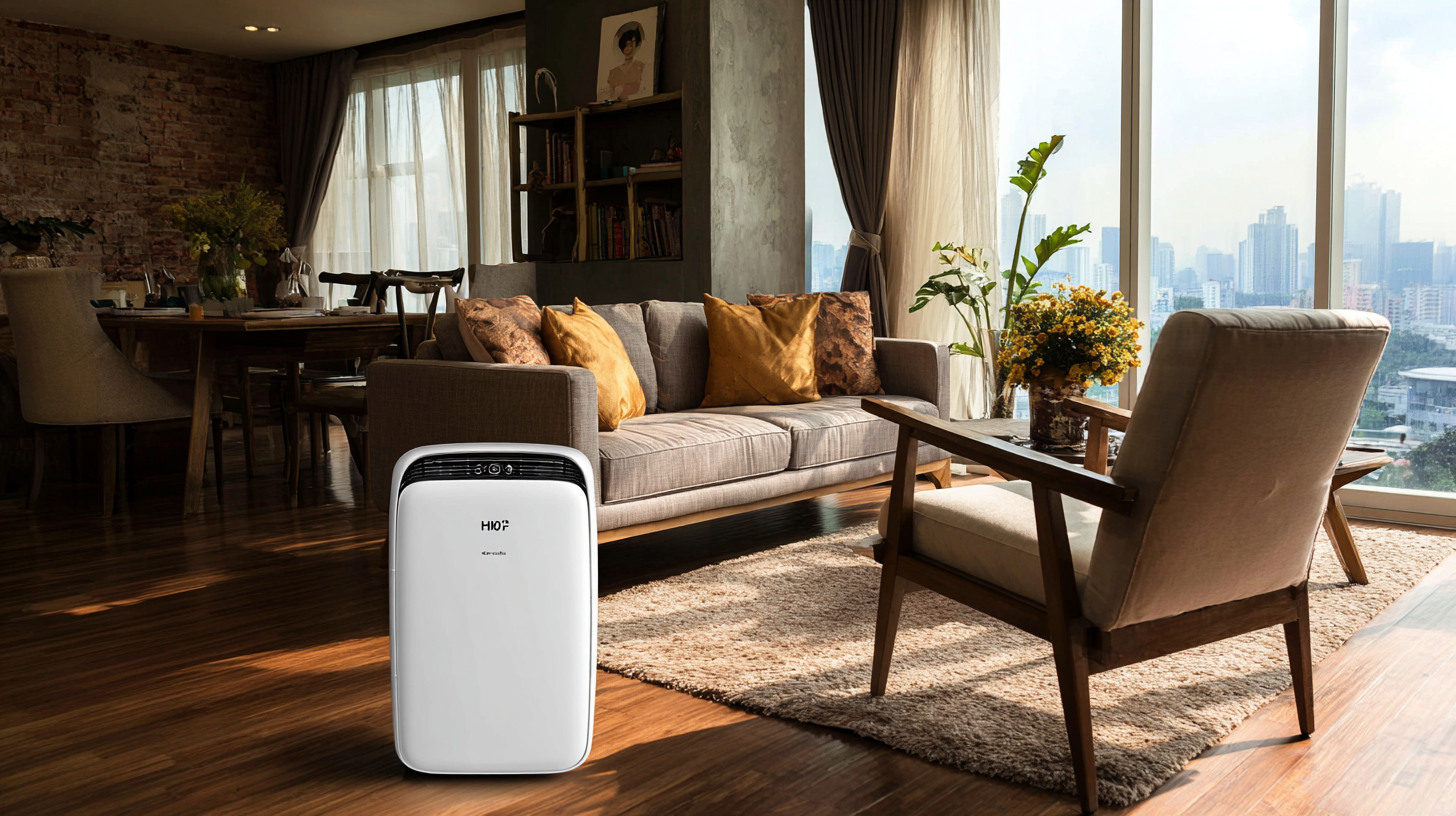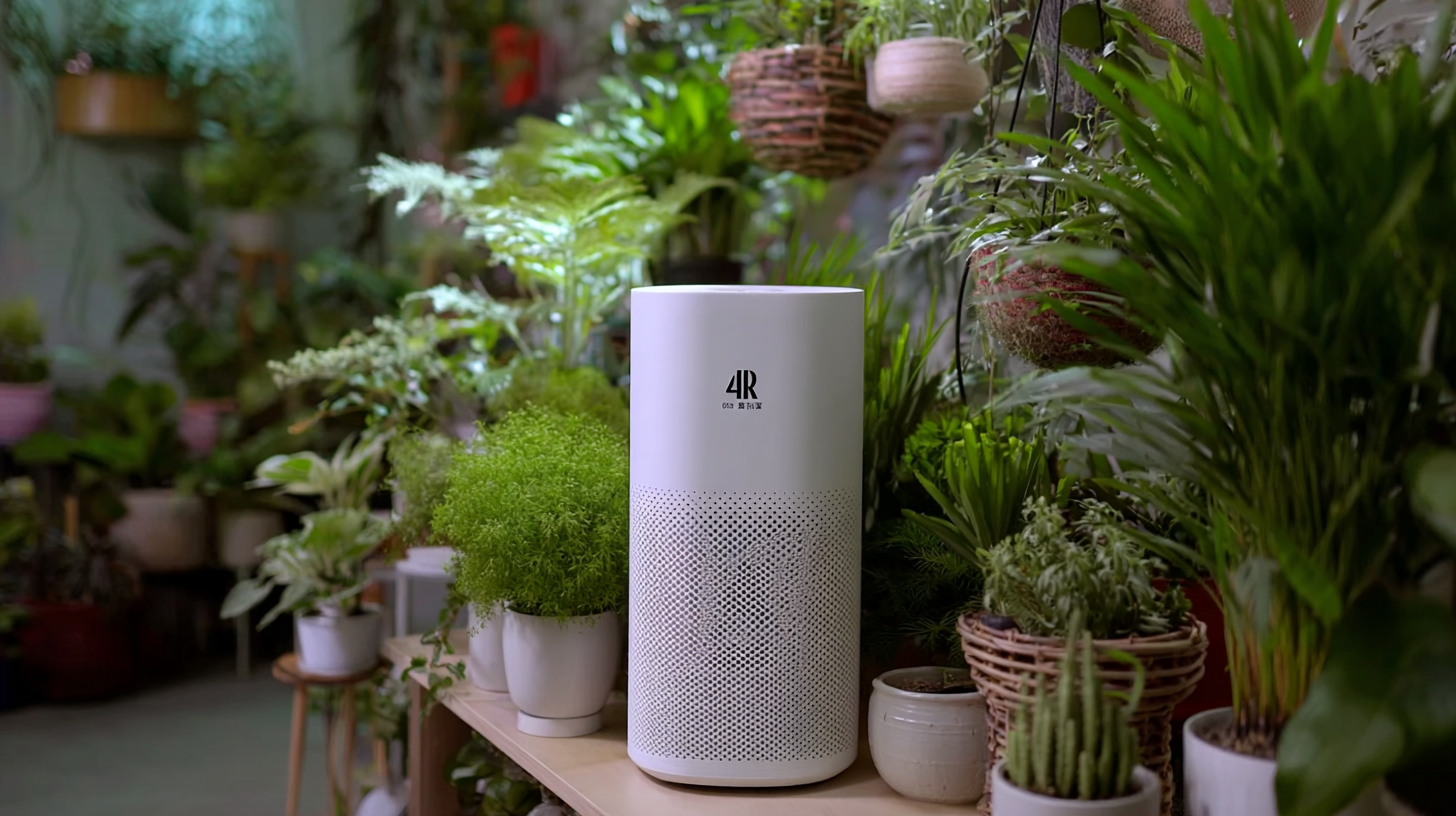
Finding the Right Supplier for the Best Indoor Air Purifier Without Compromising Quality
As the concern for indoor air quality rises globally, the demand for effective Indoor Air Purifiers has surged dramatically. According to a report by the World Health Organization, indoor air pollution is responsible for approximately 4.3 million deaths each year, reinforcing the urgency for appropriate air cleaning solutions. The global air purifier market is expected to reach over $29 billion by 2027, indicating a robust growth fueled by increasing awareness of health and wellness amidst urbanization and pollution. Therefore, sourcing the right supplier for Indoor Air Purifiers is essential, as it not only impacts the product quality but also influences consumer trust and market share. In this context, Chinese manufacturers are leading the charge, leveraging innovative technologies and stringent quality standards to cater to global demands, effectively demonstrating that "Quality Wins the Global Market.

Understanding the Importance of Indoor Air Quality in Modern Living Spaces
 Indoor air quality (IAQ) has become an increasingly important consideration in modern living spaces, as studies reveal that indoor air can be significantly more polluted than outdoor air. According to the Environmental Protection Agency (EPA), indoor air pollutants can be two to five times higher than levels found outside, a phenomenon that raises serious concerns for our health and well-being. The World Health Organization (WHO) has reported that poor indoor air quality contributes to various health issues, including respiratory diseases, cardiovascular problems, and even reduced cognitive function.
Indoor air quality (IAQ) has become an increasingly important consideration in modern living spaces, as studies reveal that indoor air can be significantly more polluted than outdoor air. According to the Environmental Protection Agency (EPA), indoor air pollutants can be two to five times higher than levels found outside, a phenomenon that raises serious concerns for our health and well-being. The World Health Organization (WHO) has reported that poor indoor air quality contributes to various health issues, including respiratory diseases, cardiovascular problems, and even reduced cognitive function.
Moreover, the presence of particulate matter, volatile organic compounds (VOCs), and allergens can lead to chronic health conditions, particularly for vulnerable populations such as children and the elderly. A report by the American Lung Association highlights that approximately 1 in 13 Americans suffer from asthma, and exposure to indoor pollutants can exacerbate this condition. As awareness of these issues grows, investing in a high-quality indoor air purifier has become essential for maintaining a healthy living environment. Choosing the right supplier for these devices is paramount, as the effectiveness of air purifiers greatly depends not only on their technology but also on their ability to meet rigorous quality standards.
Key Technical Specifications to Evaluate When Choosing an Air Purifier
When selecting an indoor air purifier, it's essential to evaluate several key technical specifications to ensure you’re making a sound investment. First and foremost, consider the purifier's HEPA filter certification. A true HEPA filter can trap 99.97% of airborne particles as small as 0.3 microns, making it crucial for effectively removing allergens, dust, and pet dander from your indoor environment. Additionally, look for purifiers with activated carbon filters, which help eliminate odors and harmful VOCs (volatile organic compounds) commonly found in household products.
Another important specification is the Clean Air Delivery Rate (CADR), which measures the volume of filtered air delivered by the purifier. Higher CADR ratings indicate better performance, especially in larger rooms. Noise levels are also vital to consider; a unit that operates quietly ensures that it won't disturb your daily activities or sleep. Lastly, evaluating the energy efficiency of an air purifier can save you money on utility bills while promoting eco-friendly practices. By prioritizing these specifications, you can find a reliable air purifier that enhances indoor air quality without compromising on performance or quality.

Top Air Purifier Types: HEPA, Activated Carbon, and UV-C Technology Explained
When it comes to ensuring the best indoor air quality, selecting the right air purifier is crucial. Among the leading technologies available, HEPA (High Efficiency Particulate Air), activated carbon, and UV-C technology are the most prominent. HEPA filters are renowned for their efficiency in trapping airborne particles, capturing up to 99.97% of dust, pollen, and allergens as small as 0.3 microns. This makes them ideal for allergy sufferers and pet owners, as they help eliminate pet dander and other irritants from the environment.
Activated carbon air purifiers excel in removing odors and harmful gases. They contain porous materials that absorb volatile organic compounds (VOCs) and other pollutants, making them particularly beneficial in homes with pets or kitchens where cooking odors linger. The growing demand for air purifiers is evident in the expanding market for pet air purifiers, projected to grow significantly in the coming years. This growth is driven by the increasing awareness of indoor air quality among pet owners, who are seeking solutions to minimize allergens.
Moreover, UV-C technology offers an additional layer of protection by utilizing ultraviolet light to kill bacteria and viruses in the air. Though less common as a standalone solution, when combined with HEPA or activated carbon filters, it enhances the overall purification effectiveness. According to recent industry reports, the air purifier market continues to evolve, with an emphasis on innovative designs that cater to specific needs, proving that consumers are not willing to compromise on quality when it comes to their indoor air.
Evaluating Supplier Reliability: Key Metrics and Certifications to Look For
When searching for the right supplier of indoor air purifiers, evaluating their reliability is crucial to ensure you’re not compromising on quality. Key metrics to consider include the supplier's adherence to recognized industry standards, such as ISO 9001 for quality management systems. A report from the International Organization for Standardization indicates that companies with ISO certification can reduce waste and improve efficiency by up to 20%, highlighting the importance of selecting a supplier that prioritizes quality management.
Additionally, certifications such as the Association of Home Appliance Manufacturers (AHAM) Clean Air Delivery Rate (CADR) are essential for understanding the performance efficiency of air purifiers. According to AHAM data, products that meet their standards can remove specific amounts of smoke, dust, and pollen from the air, which is critical for homes with allergy sufferers. Suppliers that invest in certified products demonstrate a commitment to quality and customer health, thereby enhancing their reliability as a supplier in the competitive indoor air purifier market. Lastly, looking for testimonials and reviews can provide insight into the supplier's track record and customer satisfaction, ensuring you make an informed decision.
Cost-Benefit Analysis: Balancing Price and Purifier Efficacy for Optimal Value
When searching for the right indoor air purifier, homeowners often face the challenge of balancing cost and effectiveness. A recent report from the Environmental Protection Agency (EPA) emphasizes that air purifiers can significantly reduce indoor air pollutants. However, not all purifiers are created equal, and the price often reflects their efficacy. According to a study by Consumer Reports, models priced above $300 can remove up to 99.97% of airborne particles, while cheaper alternatives may only filter out about 50%. This stark contrast in performance highlights the importance of conducting a thorough cost-benefit analysis before making a purchase.
Furthermore, the longevity of air filters should also factor into the overall cost. A high-quality purifier may have a higher upfront cost but can offer savings in replacement filters and energy usage over time. The Association of Home Appliance Manufacturers (AHAM) notes that air purifiers with high Clean Air Delivery Ratings (CADR) provide a better return on investment, as they effectively improve indoor air quality with lower maintenance costs. Therefore, while it’s tempting to select the lowest-priced option, investing in a reputable supplier and a high-end model can yield significant health benefits and long-term savings.
Finding the Right Supplier for the Best Indoor Air Purifier Without Compromising Quality - Cost-Benefit Analysis
| Supplier | Purifier Model | Price (USD) | Efficacy Rate (%) | Noise Level (dB) | Filter Lifespan (months) | Cost-Benefit Score |
|---|---|---|---|---|---|---|
| Supplier A | Model X1 | $250 | 95% | 30 dB | 12 months | 8.5 |
| Supplier B | Model Y2 | $300 | 90% | 35 dB | 10 months | 7.0 |
| Supplier C | Model Z3 | $180 | 85% | 28 dB | 6 months | 6.5 |
| Supplier D | Model W4 | $220 | 92% | 40 dB | 14 months | 8.0 |
| Supplier E | Model V5 | $150 | 80% | 25 dB | 5 months | 5.0 |
